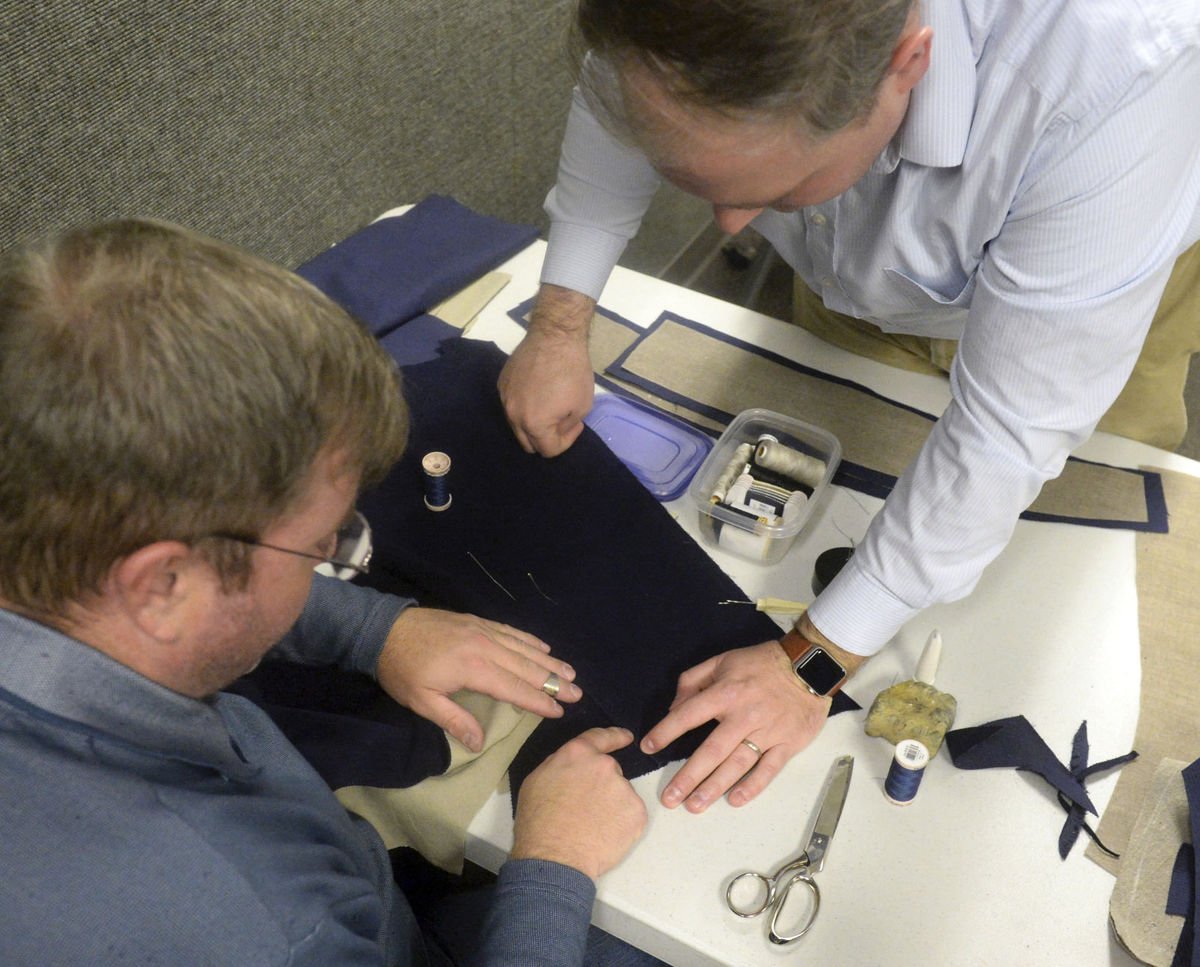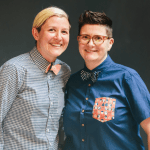
ALAMANCE, N.C. (AP) — Rob Hickman, dressed in a baseball cap, T-shirt and jeans, isn’t your typical 18th century tailor.
A Richmond resident who’s been doing 18th and 19th century re-enactments since 1998, Hickman traveled to Alamance specifically for a three-day, $240 period clothing workshop at Alamance Battleground aimed at teaching re-enactors how to make their own breeches.
The workshop was led by Neal Hurst, associate curator of Costume and Textiles at the Colonial Williamsburg Foundation, where he first got started making clothing to better the art.
“I had an interest in it from a very young age, and had an interest in re-enacting, and wasn’t very satisfied with the available clothing that people were wearing,” Hurst said. “It didn’t look like what I was seeing in museums, so (I was) trying to find pieces to copy and make those reproductions so it was closer to whatever time period I was trying to recreate.”
His students work by hand and use historically accurate tools, save for a modern iron that’s serving the purpose a fireplace would have back then.
Hurst also is sticking with linen, cotton and wool for simplicity, but says the most common material used for breeches 200 years ago was leather.
“For most average working men in the 18th century, Piedmont North Carolina, they’re going to go to a tailor to have these breeches made for them, and we’ve kind of condensed this down to three days, whereas a tailor in the period would spend seven years learning how to measure, cut and fit breeches, waistcoats and coats. We’re doing this in 18 hours,” he laughed.
More accurate clothing
For J. Niemoller, a member of the house unit at Guilford Courthouse, it’s a chance both to save money on the clothing item — which runs about $250 with material and labor costs — and to make a pair of breeches that actually fits.
“I’m a large fellow, and trying to get someone to make clothing for me is a little difficult, so I wanted to learn the correct way to measure and to lay out the designs,” he said. “I’m not much of a sewer. A lot of this stuff I’m learning today, and maybe I’ll do it again. Maybe I won’t. What I’m leaving today with is a pattern for myself so I can pay someone to make it.”
He’s been doing re-enactments since 2008, and says his favorite aspects are camping without modern amenities, and educating people about the Revolutionary era of our history.
Now a “veteran” in the art of re-enacting, he’s ready to start putting more effort into his clothing.
“Like so many other re-enactors, I started off buying from the mass retailers. And they’re a great resource, and they’re great to advise them to go to, but they’re putting out volume and not really quality, and so that’s a weak point. And so I’ve gotten to the point in my hobby that I really want to have more accurate clothing.”
Knowing one’s history
Janet Pyatt of New London is his official “sewer.”
They’ve been working together since they met at an event in 2010, where she was manning a booth for her business, “The Backcountry Peddler.”
Pyatt started making period clothing as a volunteer 15 years ago at the Schiele Museum of Natural History in Gastonia — first for herself and children, then for others.
She loves contributing to local re-enactments, especially those that educate people about the fragments of North Carolina history that might otherwise be buried, like the Civil War surrender at Bennett Place in Durham: the largest troop surrender of the war, despite the fame of Appomattox.
“People need to know their own history. There’s an old saying that you may have heard, that to know who we are, we have to know where we’ve come from. To know where we’re going, we have to know where we’ve been. And I take that very seriously. I think it’s entirely true,” Pyatt said.
She says history is like your family: You don’t get to choose it.
“History is what really happened. It’s not what should have happened. It’s not what we wish had happened. It’s what really happened, what our ancestors really did, like it or not,” she said.
Both Pyatt and Niemoller apply that philosophy to everything they do, down to the smallest stitch.
[“Source-pilotonline”]







